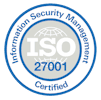As we emerge from the pandemic, organizations are putting their best foot forward to adapt to a new working culture. They are cutting real estate costs to protect the bottom line and to efficiently manage a hybrid workforce.
This means that organizations are trying to reduce office space while still providing employees with the best possible experience. A meeting room and desk booking system does that – it optimizes the use of office space while providing employees with the option to choose their workspace.
Last year, office space occupancy in the APAC region increased by 223%.
How efficiently your workplace is being used is determined by the occupancy patterns of your employees who use the office space for their work.
So, to be able to determine how well your office space is being used, you need data on the actual usage of the space.
By understanding how and when employees use different areas of the office, organizations can make informed decisions about which spaces to keep and which to eliminate, ultimately reducing costs without sacrificing employee satisfaction.
But how to capture office meeting room and desk occupancy data?
1. Spot Check Solution
This is the most primitive method to track occupancy. Just stand up from your seat and look around the office for meeting rooms and desks to check whether they are occupied. Many organizations still use this method.
The receptionist usually has a bird’s eye view of the entire office, so she usually keeps track of occupancy.
2. Physical Key Solution
Some organizations keep their meeting rooms and desk cabinets under lock and key. Small organizations that don’t fancy using a meeting room and desk booking system, employ this tactic.
To use these spaces, the user must approach the front desk or the receptionist to obtain the key after verbally or electronically filling in a request. The request and return of the key form the time stamp on the usage of the space.
While this is a very low-cost way of recording occupancy information, it has many drawbacks such as the need to obtain a physical key. Also, it requires a person in charge to manage and maintain the records.
Secondly, the requesting and returning of the key as time stamps do not necessarily mean the space is occupied for that period of time. This is a highly manual and cumbersome approach and is prone to mistakes, delays and may cause poor usage of the spaces.
3. Meeting Room & Desk Booking Solution
Using our meeting room and desk booking solution, ecobook, users can check in and check out of the workspace. The system sends out reminders and enforces policies such as auto-cancellation if check-in is not performed within a certain pre-defined time limit.
By enforcing such rules, users will be compelled to act. This provides a simple way of keeping track of occupancy.
In most organizations, large and small turf wars on meeting spaces result in users booking such spaces over a long period of time and checking in and out without actual occupancy. In such cases, there is a huge discrepancy between the data being gathered and the actual usage of the space.
4. Digital Hardware Devices
These are tools that are either mounted near the desks or outside the meeting rooms. They are lightweight and have features that can assist in information dissemination and data collection.
With these devices in place, the ability to track check-in and check-out of desks and meeting rooms becomes much more effective. This is primarily because the user must be near the space to interact with the device.
For example, the ecobook desk and room display panels come with a touch screen to allow users to check-in and check-out. It also comes with NFC and HID cards to allow users to use their existing staff cards to authenticate and register themselves.
Timers on the device help to keep track of no-shows so that reservations can be automatically released if the user does not check-in on time. The advantage, as we have explained, is that data collection becomes seamless and more accurate.
Data collection is also real-time and gives an accurate picture of the occupancy. The downside is that you have to purchase and mount these devices.
5. Smart Locks
Smart locks bring intelligence into the traditional door-locking mechanism. They are usually integrated with software that helps to keep track of access rights, alarms and door access logs. This helps monitor occupancy rates.
The advantages are that smart locks provide control and information from what is otherwise a mundane task of opening and closing doors.
6. Sensors
Sensors offer the most effective and non-intrusive form of data collection. They act on occupancy by monitoring the environment. Sensors detect the presence of people inside the room or at the desk thereby automatically determining the occupancy rate.
Sensors come with back-end software solutions that help to collect, aggregate, analyze and report on the information. For example, ecobook collects data through sensors that are mounted underneath the desks or on the roof of meeting spaces. These are typically infrared sensors that can detect human body presence and send a quick and short ping to ecobook about the status of the space.
Real-time heat maps can be generated and analyzed from these sensors. Like digital hardware devices, the advantages are plenty. Firstly, it is non-intrusive and does not need human interaction. Secondly, it can collect data in real time and is considered the most accurate.
Conclusion
Many organizations are requesting the occupancy monitoring feature in their meeting room and desk booking system to get greater visibility into how their office space is being used.
Now, it’s time for you to embrace data and technology to be cost-effective and make informed business decisions.
Cheers!





